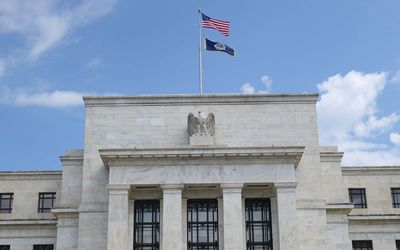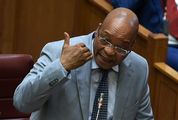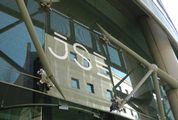Fed holds rates steady as US economy grows
by Agency Stafff,
2016-03-16 20:38:50.0
NEW YORK — Federal Reserve officials held off from raising borrowing costs and scaled back forecasts for how high interest rates will rise this year, citing the potential impact from weaker global growth and financial-market turmoil on the US economy.
The Federal Open Market Committee (FOMC) kept the target range for the benchmark federal funds rate at 0.25% to 0.5%, the central bank said in a statement on Wednesday following a two-day meeting in Washington. The median of policy makers’ updated quarterly projections saw the rate at 0.875% at the end of 2016, implying two quarter-point increases this year, down from four forecast in December.
"The committee currently expects that, with gradual adjustments in the stance of monetary policy, economic activity will expand at a moderate pace and labour market indicators will continue to strengthen," the FOMC said. "However, global economic and financial developments continue to pose risks."
Kansas City Fed president Esther George dissented from the decision, preferring a quarter-point rate increase.
Global markets were little changed, and the dollar rose, ahead of the Fed’s statement. Chairwoman Janet Yellen was to hold a press conference later.
Global growth
Weaker-than-forecast global growth has clouded the US outlook and led investors to expect a slower pace of tightening since the Fed raised rates in December for the first time in almost a decade.
Ms Yellen said in February that market turbulence had "significantly" tightened financial conditions by pushing down stock prices, causing the dollar to strengthen and boosting some borrowing costs. On Wednesday she said it remained to be seen whether a recent firming in US core inflation, which excludes volatile energy and food components, would be sustained.
"Economic activity has been expanding at a moderate pace", with household spending gaining amid "soft" company investment and net exports, the Fed said. While inflation has "picked up in recent months", market-based measures of inflation compensation are still low, the central bank said.
Policy makers maintained their projections on how soon inflation will return to the Fed’s 2% target, while cutting their inflation forecast to 1.2% this year from 1.6%. Officials still see the preferred price gauge rising 1.9% in 2017 and 2% in 2018.
Officials maintained their forecast for a 4.7% US unemployment rate in the fourth quarter of this year. The median projection for 2017 fell to 4.6% from 4.7%, and in 2018 to 4.5% from 4.7%. The rate stood at 4.9% in February.
Labour Market
"A range of recent indicators, including strong job gains, points to additional strengthening of the labour market," the FOMC said.
The Fed reiterated that the "stance of monetary policy remains accommodative, thereby supporting further improvement in labour market conditions and a return to 2% inflation".
Fed officials have differed publicly about economic prospects, with governor Lael Brainard on March 7 arguing for patience in tightening monetary policy while vice-chairman Stanley Fischer on the same day pointed to the "first stirrings" of inflation.
Ms Yellen and her colleagues have singled out uncertainty over China’s outlook as a risk to US growth.
The domestic US economy has mostly been solid, however. Payroll gains have averaged 235,000 over the last six months as the jobless rate matched the Fed’s goal for maximum employment, though measures of long-term unemployment and wage growth suggest the labour market still has room to grow.
Inflation Mandate
Some progress has also been made on the inflation side of the Fed’s dual mandate. The personal consumption expenditures price index, which the Fed targets at 2% annual gains, rose 1.3% in January from a year earlier, after 13 consecutive months with rises below 1%, owing to a slide in energy prices.
Oil prices have surged about 40% since mid-February, when the cost for a barrel of crude fell to about $26, the lowest since 2003.
US stock markets, which had slumped by more than 10% by mid-February from the start of the year, have also regained ground, with the Standard and Poor’s 500 Index now down just 1.4% this year through Tuesday. Meanwhile the dollar, whose strength in 2015 hurt US exports and dented growth, has slipped about 1.3% against a broad basket of currencies since December 31.
International Easing
The Fed’s tightening bias contrasts with aggressive easing abroad.
The European Central Bank unleashed another round of unprecedented stimulus last week that included a cut in a key interest rate further below zero.
In Tokyo, the Bank of Japan held fire on further stimulus Tuesday but laid the groundwork for additional easing after cutting its deposit rate to minus 0.1% in January.
China’s central bank cut the main interest rate to a record low in six successive reductions through October, and recently made another reduction to the required reserveratiofor major banks.
Bloomberg

Federal Reserve. Picture: AFP PHOTO/KAREN BLEIER
NEW YORK — Federal Reserve officials held off from raising borrowing costs and scaled back forecasts for how high interest rates will rise this year, citing the potential impact from weaker global growth and financial-market turmoil on the US economy.
The Federal Open Market Committee (FOMC) kept the target range for the benchmark federal funds rate at 0.25% to 0.5%, the central bank said in a statement on Wednesday following a two-day meeting in Washington. The median of policy makers’ updated quarterly projections saw the rate at 0.875% at the end of 2016, implying two quarter-point increases this year, down from four forecast in December.
"The committee currently expects that, with gradual adjustments in the stance of monetary policy, economic activity will expand at a moderate pace and labour market indicators will continue to strengthen," the FOMC said. "However, global economic and financial developments continue to pose risks."
Kansas City Fed president Esther George dissented from the decision, preferring a quarter-point rate increase.
Global markets were little changed, and the dollar rose, ahead of the Fed’s statement. Chairwoman Janet Yellen was to hold a press conference later.
Global growth
Weaker-than-forecast global growth has clouded the US outlook and led investors to expect a slower pace of tightening since the Fed raised rates in December for the first time in almost a decade.
Ms Yellen said in February that market turbulence had "significantly" tightened financial conditions by pushing down stock prices, causing the dollar to strengthen and boosting some borrowing costs. On Wednesday she said it remained to be seen whether a recent firming in US core inflation, which excludes volatile energy and food components, would be sustained.
"Economic activity has been expanding at a moderate pace", with household spending gaining amid "soft" company investment and net exports, the Fed said. While inflation has "picked up in recent months", market-based measures of inflation compensation are still low, the central bank said.
Policy makers maintained their projections on how soon inflation will return to the Fed’s 2% target, while cutting their inflation forecast to 1.2% this year from 1.6%. Officials still see the preferred price gauge rising 1.9% in 2017 and 2% in 2018.
Officials maintained their forecast for a 4.7% US unemployment rate in the fourth quarter of this year. The median projection for 2017 fell to 4.6% from 4.7%, and in 2018 to 4.5% from 4.7%. The rate stood at 4.9% in February.
Labour Market
"A range of recent indicators, including strong job gains, points to additional strengthening of the labour market," the FOMC said.
The Fed reiterated that the "stance of monetary policy remains accommodative, thereby supporting further improvement in labour market conditions and a return to 2% inflation".
Fed officials have differed publicly about economic prospects, with governor Lael Brainard on March 7 arguing for patience in tightening monetary policy while vice-chairman Stanley Fischer on the same day pointed to the "first stirrings" of inflation.
Ms Yellen and her colleagues have singled out uncertainty over China’s outlook as a risk to US growth.
The domestic US economy has mostly been solid, however. Payroll gains have averaged 235,000 over the last six months as the jobless rate matched the Fed’s goal for maximum employment, though measures of long-term unemployment and wage growth suggest the labour market still has room to grow.
Inflation Mandate
Some progress has also been made on the inflation side of the Fed’s dual mandate. The personal consumption expenditures price index, which the Fed targets at 2% annual gains, rose 1.3% in January from a year earlier, after 13 consecutive months with rises below 1%, owing to a slide in energy prices.
Oil prices have surged about 40% since mid-February, when the cost for a barrel of crude fell to about $26, the lowest since 2003.
US stock markets, which had slumped by more than 10% by mid-February from the start of the year, have also regained ground, with the Standard and Poor’s 500 Index now down just 1.4% this year through Tuesday. Meanwhile the dollar, whose strength in 2015 hurt US exports and dented growth, has slipped about 1.3% against a broad basket of currencies since December 31.
International Easing
The Fed’s tightening bias contrasts with aggressive easing abroad.
The European Central Bank unleashed another round of unprecedented stimulus last week that included a cut in a key interest rate further below zero.
In Tokyo, the Bank of Japan held fire on further stimulus Tuesday but laid the groundwork for additional easing after cutting its deposit rate to minus 0.1% in January.
China’s central bank cut the main interest rate to a record low in six successive reductions through October, and recently made another reduction to the required reserveratiofor major banks.
Bloomberg





















Change: 0.26%
Change: 0.41%
Change: 0.74%
Change: 0.41%
Change: -0.46%
Data supplied by Profile Data
Change: -0.01%
Change: 0.90%
Change: 0.26%
Change: 0.00%
Change: 0.66%
Data supplied by Profile Data
Change: 0.82%
Change: 0.68%
Change: 0.64%
Change: 1.03%
Change: 0.82%
Data supplied by Profile Data
Change: 0.17%
Change: -0.31%
Change: 0.94%
Change: 0.17%
Change: -0.05%
Data supplied by Profile Data